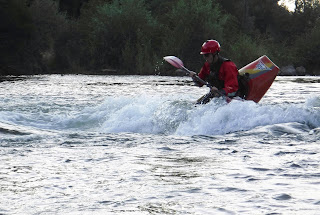No has to tell you, but the last two years have been like a solo canoe trip where everything has gone wrong. The Covid-19 pandemic has and continues to cause upheaval and uncertainty in our daily lives. Masks, vaccinations, Covid tests, and social distancing are the new routines of everyday life. While health experts say with more vaccinations, things should be back to normal. However, the virus continues to kill throughout the world.
The world's climate change hasn't helped much either. Some places are too wet, and some places are much too hot and dry. Outside of suffering through a few hot summer days at my home near Sacramento. I've been pretty immune in the past couple of years. That, however, changed this past year as California's drought and the Caldor Fire hit too close to home. I watched all summer long as Lake Jenkinson dwindled down week by week after suffering the third driest winter in the state's history. When folks asked when we would close the boathouse, my standard answer is as long as we have enough water to float the canoes and kayaks.
But that didn't matter much after the Caldor Fire sparked near Sly Park. With evacuation orders in place, our season came to an abrupt end, as the fire raged south of the park. Smoky days covered Northern California like a thick blanket offering little escape.
My daily and hectic work schedule has only added to the mix of this year's odyssey of life. Last year, in height of the pandemic, when the world was shut down it was a bit easier to escape to the river for an afternoon adventure. This year, however, my paddling days are way off my usual pace.
With that said, one might think I have little to be thankful for this Thanksgiving. No doubt about it, this year, I feel a lot like Charlie Brown when Lucy pulled away from the football once again flat on my back. Aaaah!
Thankfully it has not been a solo trip for me. Fortunately, the past year, I've had plenty of people to lean on as I have wandered down the trail. Some show me the way, while others I have been fortunate enough to guide along.
Hopefully, it has been like that for a lot of you also. Theodore Roosevelt said, “It may be true that he travels farthest who travels alone, but the goal thus reached is not worth reaching.”
Happy Thanksgiving




















































